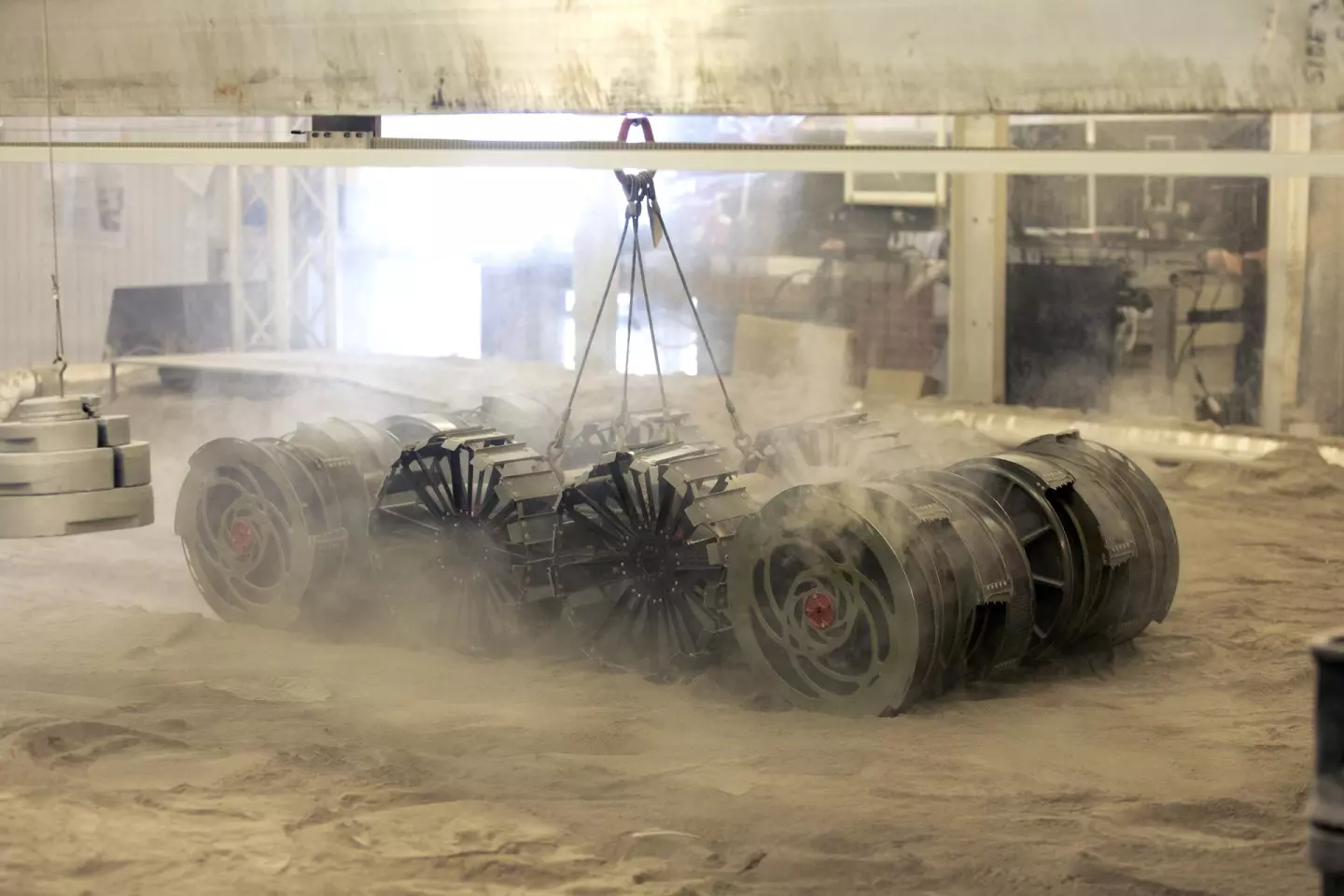NASA is building a Moon-mining robot and is asking for public help to improve it. The Regolith Advanced Surface Systems Operations Robot (RASSOR) bucket challenge is accepting new designs to tweak the technologies needed to mine ice and other materials on the Moon to make a manned lunar outpost sustainable.
The US government is committed to not only return American astronauts to the Moon but to make their presence a permanent one. However, the cost of sending personnel and cargo to the lunar surface is so staggering that the best way to set up and maintain a base there requires living off the land.
In practical terms, this means mining for necessary resources – especially ice, which can be used to provide drinking water, oxygen, and rocket fuel. The problem is that even the simplest mining operations are extremely difficult for workers in spacesuits. Imagine trying to dig coal on the deep-sea bottom using a mixed-gas diving rig and you get the idea.
The logical alternative is to use robotic digging machines, but this has its own problems. Because of the limitations of spaceflight, these robots need to be small and lightweight. On Earth, such light machines would already face challenges, but in the one-sixth gravity of the Moon, digging machines wouldn't have enough weight or traction to dig efficiently.

To overcome this, NASA engineers are using a lunar simulant sandbox at the Kennedy Space Center in Florida to test various configurations of RASSOR, which currently uses hollow cylinders formed into bucket drums at both ends of the robot. These cylinders have scoops in their circumferences that collect soil as they rotate. When they rotate in reverse, the collected soil is expelled.
According to NASA, the clever bit is that these cylinders rotate in the opposite direction to one another, so the forces balance out. This means that RASSOR essentially burrows in place instead of pushing itself up as it digs. But NASA wants to improve the details of the design and wants public help.
"With RASSOR, we’re no longer relying on the traction or the weight of the robot," says Jason Schuler, a robotics engineer in the Exploration Research and Technology Programs at Kennedy. "It is possible to excavate on the Moon or Mars with a really lightweight robot. RASSOR is excavation and transportation all in one, but we’d like to improve the design."
Through April 20, 2020, NASA will accept entries to its RASSOR Bucket Drum Design Challenge. The objective is to present a better design for the bucket drum and sheet-metal baffling inside the cylinder so RASSOR can collect and hold more lunar soil or regolith.
The challenge is being hosted by the 3D modeling website GrabCAD, where entrants can submit original designs along with a short description of how the design works. The designs must not have been previously published, exhibited or put into production. NASA says that the successful proposals will have a fill ratio of over 50 percent when they dig to capacity. Other judging criteria will include the width of the scoops, bucket drum mass, diameter, length, the volume of regolith captured, and the design's practicality.
Details of the competition and prizes can be found here.
Source: NASA






